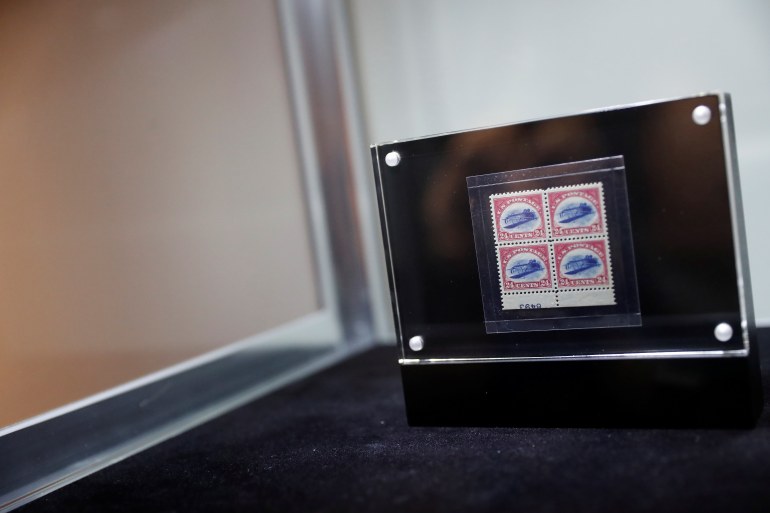US Double Eagle gold coin sells for record-smashing $18.9M
Sotheby’s also auctioned off a British Guiana One-Cent Magenta stamp, issued in 1856, for a whopping $8.3 million, making it the most valuable stamp in history.

A 1933 Double Eagle, America’s last gold coin struck for circulation, sold for a record-shattering $18.9m at a Sotheby’s auction in New York on Tuesday, and the world’s rarest stamp raked in a whopping $8.3m.
The coin, the only 1933 Double Eagle ever allowed to be privately owned, was expected to pull in somewhere along the lines of $10m to $15m at the auction but sold for far beyond that.
Keep reading
list of 4 itemsKanye’s Yeezy sneakers fetch a record $1.8M in private sale
Pricey pixel: Digital artist Pak’s NFTs auctioned off for $16.8M
Bitcoin for Babe Ruth? Sports auction house will accept crypto
“The 1933 Double Eagle has a richly captivating history which encapsulates large swathes of United States history and has been at the center of intrigue for more than 80 years,” Sotheby’s said in a statement.
With a face value of $20, the 1933 Double Eagle was designed by renowned sculptor Augustus Saint-Gaudens at the request of then-US President Theodore Roosevelt.
The coin has Liberty striding forward on one side and the American eagle on the other.
The coins were struck but never issued for use. All 1933 Double Eagles were ordered destroyed after President Franklin Roosevelt, in an effort to lift America’s battered economy from the depths of the Great Depression, took the nation off the gold standard.
Two coins were sent to the Smithsonian Institution, Sotheby’s said.
On Tuesday, the privately owned 1933 Double Eagle coin was sold by American shoe designer and collector Stuart Weitzman.
Weitzman acquired the coin in 2002 for what was then a world record price of $7.6m.

On Tuesday, Weitzman also auctioned off a British Guiana One-Cent Magenta stamp, issued in 1856, for $8.3m. That price solidifies the stamp as the most valuable in history.
“No stamp is rarer than the sole-surviving example of the British Guiana One-Cent Magenta, a unique yet unassuming penny issue from 1856, which has been heralded as the pinnacle of stamp collecting for more than a century,” Sotheby’s said.
The stamp is the only surviving one from a series that was printed by the South American nation due to a shortage of stamps from its British colonial rulers at the time.
Weitzman bought the precious stamp in 2014 for $9.5m. In step with the tradition of its past owners, Weitzman made his mark: a line drawing of a stiletto shoe and his initials.
The buyers of both the 1933 Double Eagle and the British Guiana One-Cent Magenta stamp wished to remain anonymous, Sotheby’s said.

In addition, a plate block of the 24-cent “Inverted Jenny” stamps, issued in 1918 for the first US airmail letters, sold for $4.9m, making them the most valuable US stamps.
The Inverted Jenny, which was last sold at auction some 26 years ago for $2.9m, has a unique printing error in which its biplane design appears to be upside down.
Sotheby’s said the stamp block was bought by David Rubenstein, a co-founder of private equity company The Carlyle Group.
Weitzman, an avid collector of stamps and coins since he was a little boy, has said he will use the money from Tuesday’s historic coin and stamp auction for his charitable ventures, including a Jewish museum in Madrid, Spain.